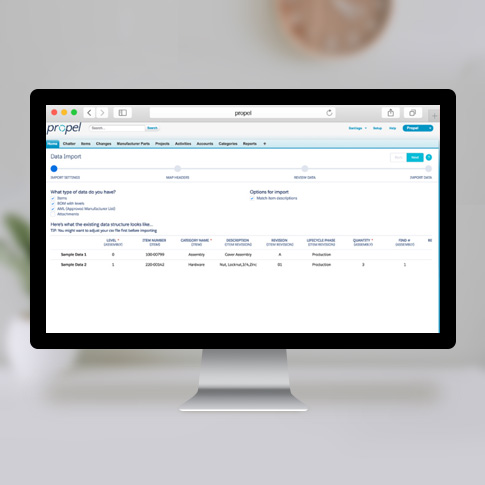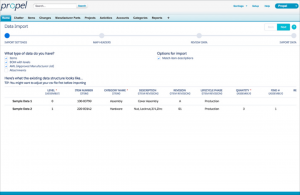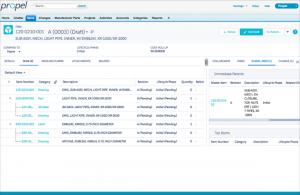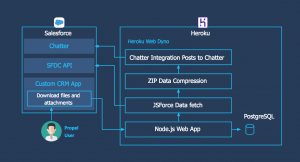Propel offers a SaaS platform that enables everyone to collaborate on all of the product information that impacts customers. Built entirely on the Salesforce platform and listed on the Salesforce AppExchange, Propel provides Product Lifecycle Management (PLM), Product Information Management (PIM) and Quality Management Software (QMS) solutions to help their customers analyze, update and facilitate product lifecycle factors, such as bill of materials (BOM), compliance and certifications.

Need: Salesforce Platform Product Development
Propel had a massive need to expand upon the product they had built with VisualForce in order to build a dynamic application. While VisualForce was a good starting point, VisualForce alone did not provide Propel with the tools necessary to develop their platform to meet customer needs.
The team needed a robust combination of stack components that could provide a visually pleasing user interface and accommodate the varying business needs of their customers. They also needed a solution to store and retrieve information with ease throughout the stages of the product lifecycle – many of their customers, for example, desired simplified workflow processes due to managing product lines that consist of large volumes of BOM data.
The existing software the team had developed did not meet required application response times and the legacy system did not have the capacity to handle large data files or the on-demand compression of large data files into a single download.
They started to rebuild to resolve these shortcomings but found they needed to collaborate with experienced Salesforce developers to effectively introduce these features.
Solution
Propel decided to partner with us to assist with product development on the Salesforce platform.
Once we worked together to analyze the existing architecture, it became clear a clean separation of logic and visual layers needed to be established. While the logic layers could be developed directly on Salesforce using triggers and custom Apex code, the visual layer required a more nuanced solution. To build and enhance this layer, VisualForce was used as a foundation to incorporate React and Redux for front-end frameworks. This React and Redux solution not only enhanced the visual customer experience but helped Propel employees to manage data more efficiently as it was easier to use.
Additionally, a Chrome Redux plugin was used to formulate the visual layer while Lightning was used to enhance user interface design. The Redux developer tools were used to store temporary form data and content to assist in the handling of BOM data, allowing users to customize the presentation of that data. After the process is complete, Salesforce remote actions can be created and stored on the Salesforce platform.
To handle large volumes of data and file sizes more elegantly, our developers designed and built an API on Heroku. The solution expanded on governor limits, limitations of file handling, and lagging response times handling these items on Salesforce.
The Lightning Design System was used in conjunction with React to integrate with certain Salesforce features, like Approval Processes and Page Layouts. This included creating plans for manufacturing a product, or “item,” and creating lists for manufacturing parts needed under each item.
Results
Using Salesforce, React, Redux, and Lightning, we designed and built a SaaS platform that enabled Propel to establish a compelling UI experience for AppExchange customers.
It provides customers with the flexibility to have custom solutions built on the platform that works around the limitations of Salesforce to meet their specific needs, such as consuming large volumes of data.
The Lightning Design System brought together all initiatives associated with product management including real-time approvals that make changes to the manufacturing process seamless and enabling users to utilize information stored in their own databases.
Propel is now on the leading edge of PLM solutions because users can not only utilize relevant product lifecycle tools but also connect with other Salesforce features, such as CRM to track customer success.
Check out more about our customer success stories.





